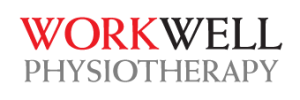Neck Pain, Headaches And Telehealth – Physiotherapy Melbourne CBD
In times like these, things can be very confusing. Did you know that your Physio is still open? Did you know that Backfocus Telehealth consults are now being offered? What does this mean and what does that look like?
Today I hope to illustrate how this might work in the context of two complaints that are likely to become very prevalent over these next months- Neck pain and Headaches.
These complaints are a very broad topic and we have written about these issues before (please see links at end of article). Today I want to give you some practical guidance in the current climate.
But firstly, why do I think that neck pain and headaches are going to be a problem? This article is particularly aimed at those working from home and I’m sure you are or have been effected by many of the following issues.
You might be:
- Working from home on a laptop / poor desk setup.
- Isolated to the home and not able to exercise
- Unable to go to the gym – where you got most of your upper body exercise
- Using a phone / tablet more than normal – the inevitable effects of poor posture
- Anxious and stressed
- Not drinking or eating as well, due to a change in routine (headaches and dehydration)
- Unable to get the Physio treatment that you normally get.
- Trying to do you-tube exercises at home, but still having symptoms.
- Asked your partner for a massage, but still getting neck pain.
In this article we will cover ;
The general approach to neck pain and headache in a Backfocus TeleHealth context:
- Conditions which can quickly improve if attended to
- Conditions which need referral
Diagnostic approach overview
- Neck pain summary
- Headache summary
- Diagnoses and treatment in practice
Physiotherapy treatment
- telehealth vs standard face to face
Telehealth Ergonomics assessment
Before your consult
- Things you can do to help your Physio and you get to the root of the problem.
FINAL WORDS
- Further information including telehealth links
Some context for neck pain and headaches
The body is quite amazing. Symptoms are like the brains internal problem-solving mechanism. Symptoms such as pain (but not limited to) are mediated by both top down mechanisms from the brain or bottom up mechanisms from the point of apparent injury.
The body might protect a region that it thinks is injured by changing the muscle activation around that region, whether or not there is still significant inflammation in that region – and whether or not you need to protect it.
It might be that the symptoms go away for a couple of weeks and then come back, even without a known aggravator. This process is not something that is fully understood, however this pattern is indicating that the issue hasn’t been dealt with and needs assessment.
This protection might present as reduced range of neck movement, stiffness felt in the shoulder or neck muscles or joints when palpated, weakness or changes to movement quality (commonly the deep neck flexors). The job of the Physio is to get your body back on track and figure out the severity of the underlying issue.
In a Telehealth consult the Physio will get a detailed history of your condition and will ask you about certain movements or ask you to try certain movement tests to clarify what is going on. Even though this might not seem like a lot (as they can’t touch you), this information can give us some important information about the state of the injury. Backfocus Physiotherapists are specialists in musculoskeletal diagnoses and our broad knowledge and diagnostic capacity has us well placed to assess in this context. Of course, a face to face consult would likely be better, but an online consult is still a good option which could lead to a solution.
Conditions which can quickly improve if attended to
Fortunately, there are many cases of neck pain and headaches which resolve by themselves without intervention. If for example you pulled a 10 hr day without getting out of your chair, you might get a frontal headache and neck pain which went away a few days later, after stopping the madness.
However, in many cases symptoms can persist despite the postural stressor having been removed. Whether in an online or direct consult, the Physiotherapist can let you know if your symptoms are likely to go away with some general activity modification or whether you need further assessment and specific treatment.
In respect to headaches related to a musculoskeletal condition, exercises and manual treatment are commonly used to reduce symptoms and to prevent re-exacerbations. This treatment can be very specific, so if massage or YouTube exercises weren’t effective, this doesn’t mean that Physio won’t be effective.
In the context of telehealth, the Physiotherapist will also be able to direct you towards exercises and self-treatments. This will be done in a way which is more specific and directed through the visual feedback enabled and effective real time coaching. This is in addition to any other assessments such as desk setup or other ergonomics factors.
Conditions which need referral
A Backfocus Physiotherapist will be able to identify if the symptoms are related to another condition which requires referral to a GP. Physios are primary health practitioners and are trained so that they can identify when to refer a problem on for further assessment. It could also be that you would still benefit from Physiotherapy treatment, but the referral is still needed.
In terms of neck pain and headaches this could involve referrals for imaging or other medical tests through your GP. In particular, there are other causes of headaches which might require specialist assessment.
Neck pain and headaches assessment and differential diagnoses
A condition may remain asymptomatic for a long period of time prior to an episode where symptoms appear. A person may have degenerative changes in their lower cervical spine which may cause nerve impingement and neurological signs on one side (symptoms of numbness, pins and needles and perhaps reflex changes in their arm). This is radiculopathy. This might occur overnight with no prior symptoms. Often there is some history of indicators over time when prompted. Whether this be pain, stiffness, reduced range of motion, dizziness, headaches or a reduced capacity to engage in specific exercise without aggravation.
Having said this, the person may not consider themselves having a neck issue until they started to develop pain. In order to resolve the pain, it might not be that the underlying condition needs to be totally ‘fixed’, but instead there is sufficient improvement. The resolution of symptoms will depend on individual factors, including how many possible causes there are, weighing up the many differential diagnoses in the context of the presentation.
The purpose of the diagnoses is to assist in determining the prognoses (expected recovery course) as well as dictating the type of treatment. The diagnoses covers both the cause of the pain and its common symptoms.
Summary of neck pain diagnoses
Current categories of diagnoses include-(1) neck pain with mobility deficits, (2) neck pain with movement coordination impairments, (3) neck pain with headache, (4) neck pain with radiating pain. Many specific diagnoses could relate to these.
Other classifications you might hear include discogenic neck pain, wry neck, nerve root pain. There are many that have been used, but they are not always helpful for treatment.
From a practical perspective it is important to differentiate conditions causing radicular symptoms or conditions of an inflammatory nature – there might be many diagnoses which could relate to these features. You might have a chronic underlying condition which has been acutely flared due to that ‘bad desk setup’, or we might be dealing with a new condition. In the case of a new condition there is often a history which indicates contributing factors or a clear cause. However, some neck pain will have no prior history and the activity that leads to the symptom onset might be relatively minor. There may also be no related signs on clinical imaging, which is why many conditions are termed non-specific.
Most work related neck complaints might be described as ‘postural’, meaning that it is related to overuse of a ‘normal neck’, resulting in symptoms related to muscles, joints etc. You can only look down at that phone for so long before you will get a headache, even if your neck is perfectly fine.
Like with headaches, neck pain can also include somatosensory referral from various structures, nerve pain and muscle pain including trigger points. Somatosensory referral means that a proposed structure is causing symptoms in another region, as opposed to directly at that site. This is due to the fact that the one nerve can supply many regions.
The most concerning injuries are often those involving trauma because of the possible structural injury that can occur as well as other red flags which indicate urgent referral to a doctor. In cases where symptoms are minimal after trauma, but have persisted for a period of time, then specific treatment can be very important.
Summary of headache diagnoses
Headaches have been classified into 2 main categories – Primary and Secondary headaches.
It may be possible to have 2 primary diagnoses if there are believed to be 2 separate conditions co-existing. More frequently it is possible to have both a primary headache and secondary headache condition.
A primary headache is one of
- Migraine (may commonly associate with aura’s and light sensitivity / food allergy)
- Tension type headache (may commonly associate with a stress related headache)
- Trigeminal autonomic cephalalgias (nerve issues, related to one of the cranial nerve pathways)
A secondary headache is a headache due to another medical reason outside the primary headache diagnoses.
Additionally some diagnoses may vary dependent on how long you have had the symptoms – whether acute / chronic.
Musculoskeletal causes of headaches are an example of a secondary diagnosis. This includes diagnoses related to
- Headaches caused by irritation of the nerves in the upper cervical spine- pain in the zone that the nerve supplies
- Headaches related to somatosensory referral – basically brain confusion about where the pain is coming from. This could be from a muscle / from a joint in that region. A common region of referral are the joints between the upper cervical spine vertebrae. The joints themselves have different parts which can cause different symptom patterns.
- Headaches from trigger points/ tender points. These ‘points’ are a common phenonmenon related to muscles. They are areas of focal muscle tone which on palpation may produce a twitch response or pain referral pattern or both. Trigger points have some documented common referral zones so you might be able to identify your headache based on a picture of a common muscle trigger point pattern.
There are many secondary headache diagnoses which may or may not be able to be addressed by Physiotherapy. However, a Backfocus Physiotherapist can still assess and refer on.
Practical diagnoses and treatment of neck pain and headache
Whilst a region of the upper neck might be causing the headache referral pattern. It might be the lower neck which has the primary movement disorder, or it could even be an upper limb / thoracic spine issue. So multiple regions will need to be addressed in treatment. One needs to understand that regions are functioning together as part of a system, which is why you might see a downward spiral when it comes to injuries.
Someone who is ‘deconditioned’ is at a particularly high risk of relapse. We need to keep moving and ensure that we address movement quality. Isolation leading to a lack of activity will likely have secondary effects if not addressed.
Often through the process of treatment the ‘primary driver’ for the symptoms can be better elucidated. Or there might be multiple drivers. This does not mean that there are multiple diagnoses though.
Physiotherapy treatment
In terms of treating neck pain and headaches, general movement recommendations are often helpful – particularly for the desk bound. But as stated previously, specific exercise to restore normal movement strategies can help. An example of helpful general movements for the neck, thoracic and lumbar spines can be found below. Whilst we might call them general, there can be specific cues which are relevant to the person performing the task. This is also why a clinician is needed to provide that feedback, to ensure you get the desired response from the exercise. This can be achieved via a telehealth / clinical context.
Specific exercises for the neck and trunk stabilising muscles are commonly prescribed, however are outside the scope of this article. These exercises require a specific attention to form and feedback and may require significant modification.
At this time people are likely to have limited access to exercise equipment. Whilst this is not ideal, it doesn’t mean that you can’t do your rehab. And if you do, lucky you, you get the hard exercises.
Manual (hands-on) treatment is often what people are thinking about when going to a Physio for neck pain / headaches. It is often very helpful as part of the overall management. Given this, the Physio might direct a client towards self-treatment strategies to produce similar effects. In a telehealth consult these strategies can be taught, however for safety reasons are beyond the scope of this article.
Below you can find some guidance on general exercises. However, this doesn’t substitute for an assessment, whether telehealth or in-person.
Ergonomics service
Telehealth consults are well suited to perfecting your desk setup. If you want a specific assessment done on your workstation then contact us to organise an online consult.
Generally we will be looking at a variety of workstation factors (desk height, chair setup, monitor and mouse and keyboard positioning, room lighting) and how the person uses the workstation (sitting posture variations etc.)
Before your consult.
Things you can do to help your Physio and you get to the root of the problem.
Physios like a good historian, because it makes it easier to figure out what the problem is. A telehealth conversation is an interaction which healthcare professionals are getting used to, so helping your clinician out by been clear about your symptoms will help-out. So we recommend taking 5-10 mins to think about what issues you might be having.
Some prep work before the consult
- What symptoms are you having (headaches, pain/ stiffness, ringing in the ears, dizziness, jaw pain, poor concentration)
- When did these symptoms start, and are they
– Worsening
– Plateaued
– Improving - Where are the symptoms
- How do these symptoms vary with activities. Are there particular aggravating activities.
- Is there a pattern over a 24 hour period – night symptoms , morning symptoms , evening symptoms.
Other general things to talk to your Physio about.
- What is my desk setup like? Was it better before? (The physio will talk to you about your desk setup and provide assessment and advice)
- What is my current exercise routine? Was it better before? Am I active during work breaks?
- Am I using my phone / tablet more than before? Maybe you are using the tablet in bed / with your elbow unsupported and causing neck fatigue.
FINAL WORDS …
I hope that gives you a plan of action. For more information on booking a telehealth consult please call Backfocus Physiotherapy on 9614 0803 or book online at www.backfocus.com.au
ADDITIONAL RESOURCES
https://www.backfocus.com.au/blog/neck-treatment-musculoskeletal-marvel/
https://www.backfocus.com.au/blog/headaches-hidden-neck-injury/
https://www.backfocus.com.au/blog/dizziness-vestibular-physiotherapy/
https://www.backfocus.com.au/blog/back-pain-recurrence/
https://www.backfocus.com.au/blog/yoga-chronic-back-pain-relief/
https://www.backfocus.com.au/blog/ergonomic-physiotherapy-advice-for-sitting-at-your-desk/
https://ichd-3.org/how-to-use-the-classification/
https://www.researchgate.net/publication/319114818_Advances_in_the_diagnosis_and_management_of_neck_pain





 backfocus.com.au
backfocus.com.au